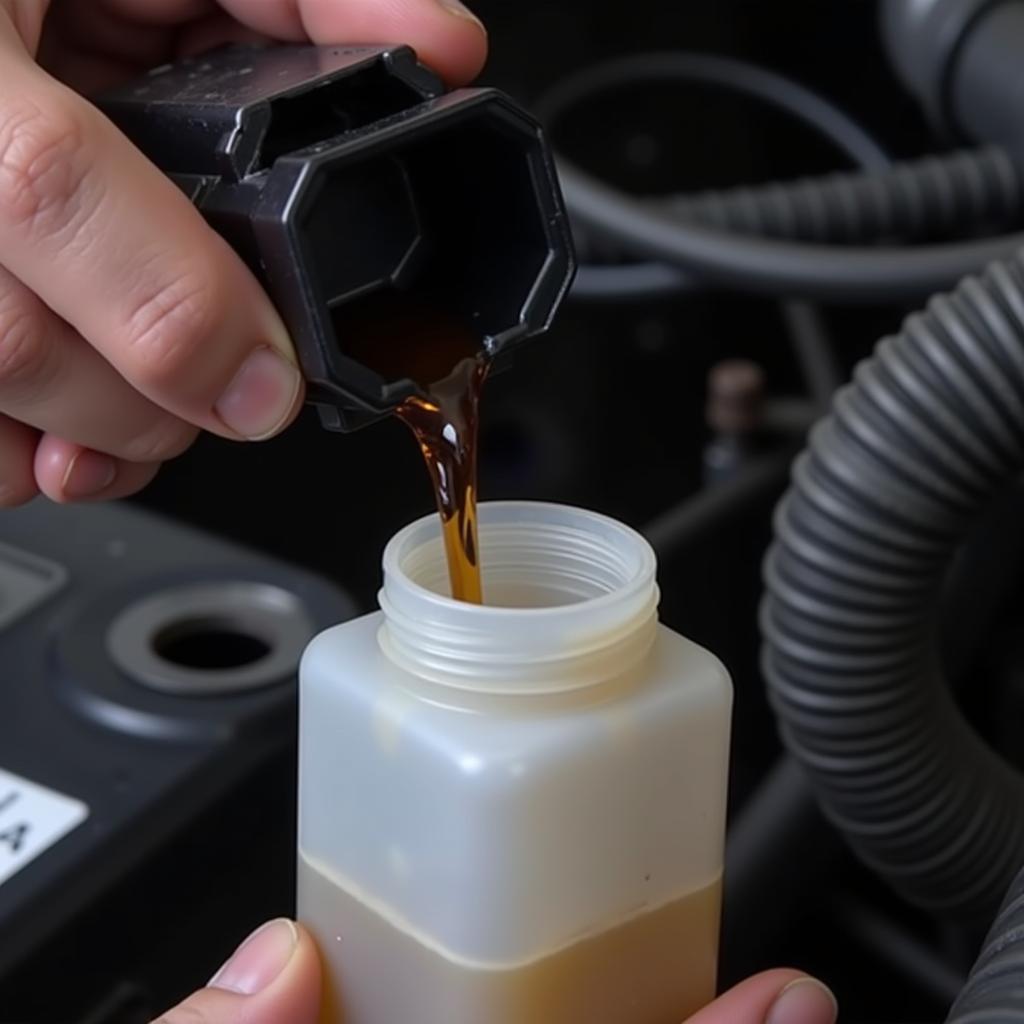If you’re driving a 2000 Chevy Blazer and the “tap brake” warning light keeps flashing, you’re not alone. This common issue can be frustrating, but understanding its cause is the first step to getting it fixed. In this article, we’ll dive deep into the possible reasons behind this warning light and guide you through the diagnostic process.
The “tap brake” warning light is part of the ABS (Anti-lock Braking System). When illuminated, it indicates a potential issue with your ABS system, which prevents your wheels from locking up during hard braking. While your regular brakes may still function, the ABS might not engage properly, increasing the risk of skidding, especially on slippery surfaces.
Common Culprits Behind the “Tap Brake” Light
Several factors can trigger the “tap brake” warning light in your 2000 Chevy Blazer. Let’s explore the most common ones:
1. Faulty ABS Wheel Speed Sensor
The ABS system relies heavily on information from wheel speed sensors, one located at each wheel. These sensors monitor the rotational speed of your wheels and send data to the ABS control module. If a sensor malfunctions, sends inaccurate data, or gets covered in debris, it can confuse the ABS system, triggering the warning light.
2. Malfunctioning ABS Control Module
The ABS control module acts as the brain of your anti-lock braking system. It receives signals from the wheel speed sensors and other components to determine when to activate the ABS. If the control module fails, it can’t interpret data accurately, leading to various ABS-related issues, including the “tap brake” warning light.
3. Low Brake Fluid Level
 low-brake-fluid-level
low-brake-fluid-level
Brake fluid is vital for transferring hydraulic pressure from the brake pedal to the calipers, engaging the brakes. Low brake fluid level can disrupt this pressure, impacting the ABS system and causing the “tap brake” warning light to illuminate. It’s crucial to check your brake fluid level regularly and top it off as needed.
4. Worn-out Brake Pads
While not directly related to the ABS system, severely worn-out brake pads can indirectly trigger the “tap brake” warning light. When brake pads wear thin, the caliper pistons extend further to compensate, potentially affecting the brake fluid pressure and interfering with the ABS system’s operation.
Diagnosing the Issue: A Step-by-Step Guide
Now that you’re familiar with the potential culprits, let’s outline a step-by-step approach to diagnose the “tap brake” warning light in your 2000 Chevy Blazer:
-
Visual Inspection: Begin with a visual inspection of your brake system. Check for any visible signs of damage, leaks, or loose connections around the brake lines, calipers, and ABS components.
-
Check Brake Fluid Level: Locate the brake fluid reservoir under the hood and check the fluid level. If it’s below the minimum mark, carefully add the recommended brake fluid type.
-
Scan for Diagnostic Trouble Codes (DTCs): Connect a compatible OBD-II scanner to your Blazer’s diagnostic port, usually located under the dashboard on the driver’s side. Retrieve any stored DTCs related to the ABS system. These codes provide valuable clues about the specific area causing the problem.
-
Inspect ABS Wheel Speed Sensors: If the DTCs point towards a wheel speed sensor, inspect the sensor for damage, debris, or corrosion. Clean the sensor and its surrounding area thoroughly. You can also use a multimeter to check the sensor’s resistance and ensure it’s within the specified range.
-
Test the ABS Control Module: Testing the ABS control module requires specialized equipment and knowledge. It’s advisable to consult a qualified mechanic or an automotive electrician for this step. They can diagnose the control module for faults and recommend repair or replacement if necessary.
Addressing the “Tap Brake” Warning Light
Once you’ve identified the root cause of the “tap brake” warning light, address it promptly to restore your Blazer’s safety and optimal braking performance.
“Ignoring a flashing ‘tap brake’ warning light is like ignoring a flashing ‘check engine’ light,” says Mark Stevenson, a seasoned automotive engineer with over 20 years of experience. “It might seem tempting to postpone the fix, but addressing the issue promptly ensures your safety and prevents potentially costlier repairs down the road.”
Here are some general guidelines for addressing the identified problems:
-
Faulty ABS Wheel Speed Sensor: Replace the faulty sensor with a new one that meets your Blazer’s specifications.
-
Malfunctioning ABS Control Module: Depending on the severity of the issue, the control module might require repair or replacement.
-
Low Brake Fluid Level: If you find yourself frequently adding brake fluid, it indicates a leak that needs immediate attention.
-
Worn-out Brake Pads: Replace worn-out brake pads to ensure optimal braking performance and prevent further issues.
Conclusion
The “tap brake” warning light in your 2000 Chevy Blazer is a crucial safety indicator. By understanding its potential causes and following the diagnostic steps outlined in this article, you can take proactive measures to address the issue and restore your Blazer’s braking system to its optimal working condition. Remember, when it comes to safety, it’s always better to be safe than sorry!
